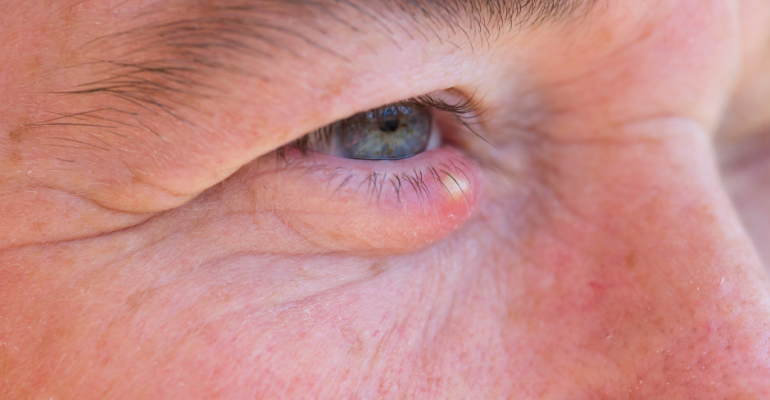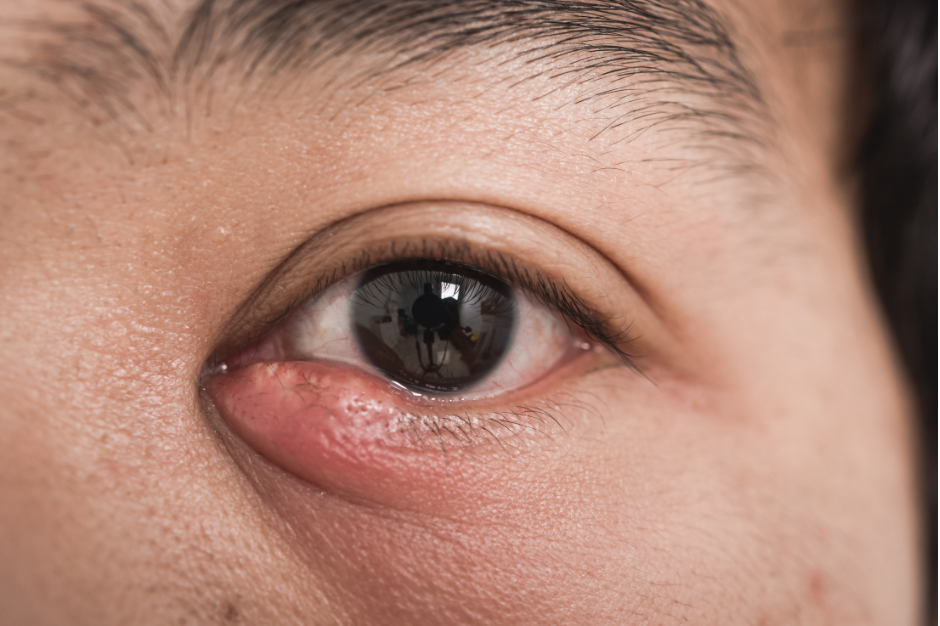Styes can affect people of all ages, with many of us experiencing their discomfort at least once in our lifetime.
Styes (known medically as chalazion) occur on the eyelid and can be quite irritating to deal with. But what causes styes and is there anything we can do to reduce the risk of them occurring?
What causes styes on the eyelid?
Styes are caused by an infection in the oil glands of the eyelid. The most common cause of a stye is a bacterial infection (specifically the bacterium Staphylococcus aureus).
Styes can also be caused by poor hygiene, a compromised immune system, and also irritation of the eyelid from things like makeup or contact lenses.
Hormonal changes, including those experienced during pregnancy or menstruation, can also increase the risk of developing a stye.
Additionally, conditions such as blepharitis, which is inflammation of the eyelid, and rosacea, which is a skin condition that affects the face, can make a person more susceptible to developing styes.
How can I reduce the chances of styes developing?
There are several steps you can take to reduce the risk of styes developing:
- Practice good hygiene: Wash your hands frequently, especially before touching your eyes. Avoid sharing towels, washcloths, or eye makeup with others.
- Clean your eyelids regularly: Use a warm, moist cloth to gently clean your eyelids and remove any buildup of oil or debris.
- Avoid using old or expired makeup: Bacteria can grow on cosmetics, so replace them frequently, especially mascara and eyeliner.
- Be gentle with your eyes: Don’t rub your eyes, and be careful when removing contact lenses or applying eye makeup.
- Manage any underlying conditions: If you have blepharitis, rosacea, or another condition that increases your risk of developing styes, be sure to manage it properly to reduce your risk.
- Keep your immune system healthy: Eating a healthy diet, getting enough sleep, and managing stress can all help to keep your immune system strong and reduce your risk of infection.
- See an eye doctor if you have frequent styes: If you have frequent styes, it’s important to see an eye doctor for a thorough evaluation. Your doctor may be able to determine if there is an underlying condition that is causing your styes and help you manage it.
How to treat styes that have already appeared
There is a number of things you can do to treat styes and reduce their discomfort, whilst speeding up their recovery:
- Warm compresses: Applying a warm, moist compress to the affected eye several times a day can help to relieve pain and reduce swelling. To make a compress, soak a clean cloth in warm water and apply it to the eye for 10-15 minutes at a time.
- Over-the-counter pain relief: Over-the-counter pain relievers, such as ibuprofen or paracetamol, can help to relieve pain associated with styes.
- Antibiotic ointments: Your doctor may prescribe an antibiotic ointment to help clear up the infection. Be sure to follow your doctor’s instructions for using the ointment.
- Drain the stye: If the stye is very painful or swollen, your doctor may need to drain it. This is usually done in the doctor’s office and is a simple procedure.
- Avoid wearing contact lenses or eye makeup: Until the stye has cleared up, it’s best to avoid wearing contact lenses or eye makeup to reduce the risk of reinfection.
- Keep your eye clean: Keep your eye and surrounding area clean to prevent the spread of infection.
It’s important to avoid squeezing or puncturing the stye yourself, as this can cause the infection to spread. If you have a stye that doesn’t improve or becomes worse, be sure to see an eye doctor for a thorough evaluation.
It’s also important to stop wearing your contact lenses when you have a stye in order to avoid the possibility of the bacteria leading the stye to cause a contact-related corneal infection.
Medical Disclaimer
This article is for information purposes only and should not be considered medical advice. If you or any other person has a medical concern, you should consult with your health care provider or seek other professional medical treatment. Never disregard professional medical advice or delay in seeking it because of something that you have read on this blog, website or in any linked materials.








